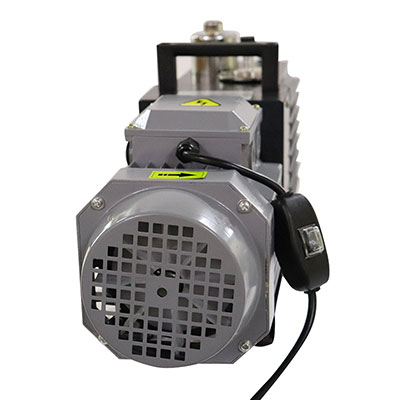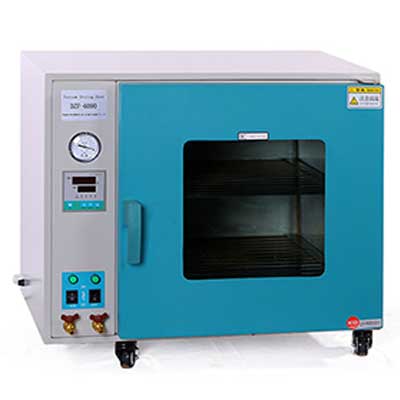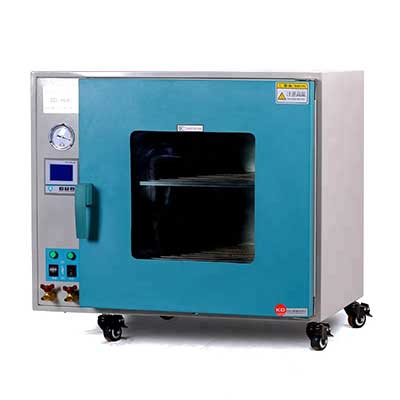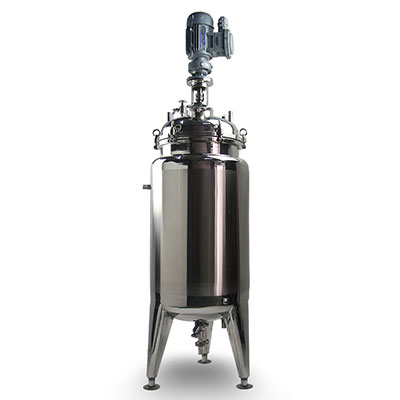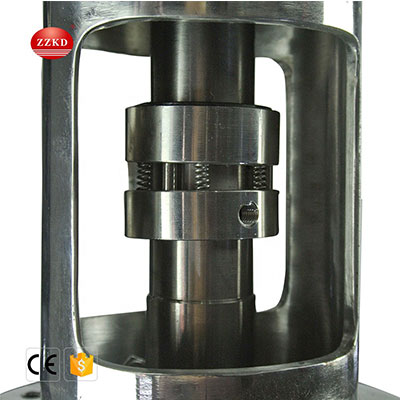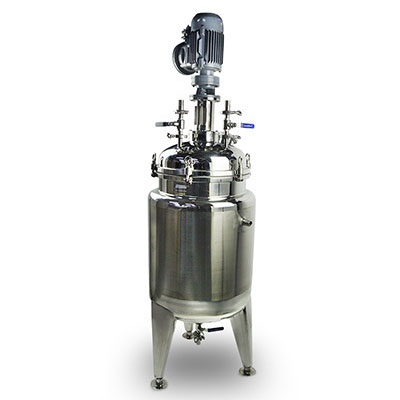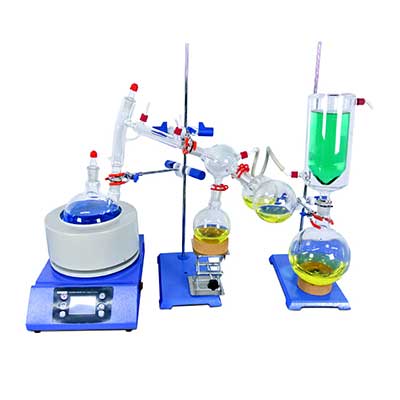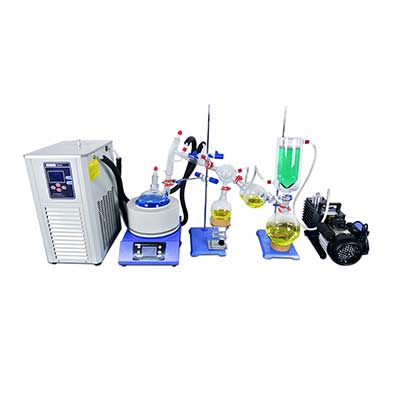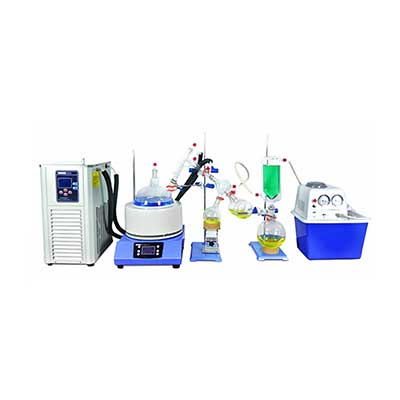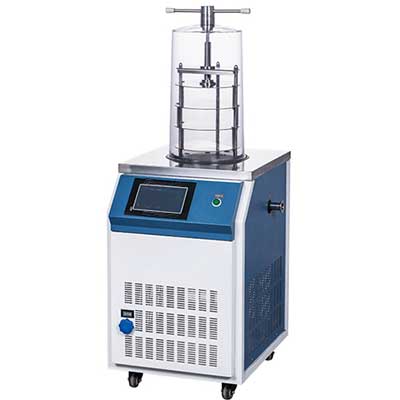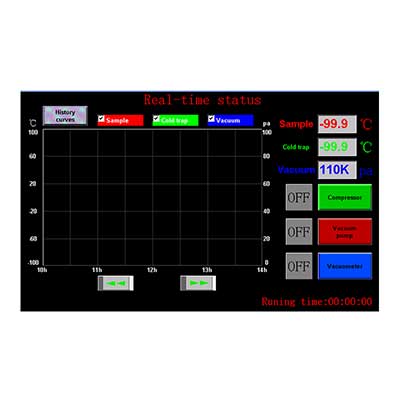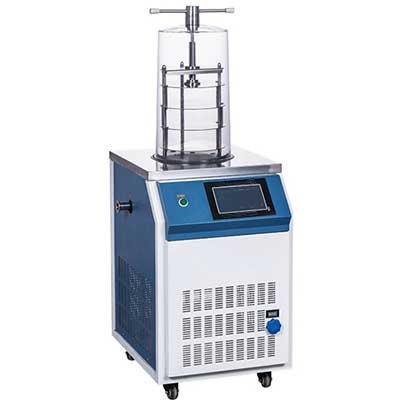-
WhatsApp
-
Email
The eccentrically mounted rotor in the rotary vane vacuum pump is tangent to the stator fixing surface. Two (or more) rotary vanes slide in the rotor slot (usually radial) and contact the inner wall of the stator. The pump cavity is divided into several A variable volume rotary vacuum pump. Generally, the gap between the rotary vane and the pump cavity is sealed with oil, so the rotary vane vacuum pump is generally an oil-sealed mechanical vacuum pump.
Use
Its working pressure range is 101325-1.33 × 10-2 (Pa) belongs to low vacuum pump. It can be used alone or as a foreline pump for other high vacuum or ultra high vacuum pumps. It has been widely used in metallurgy, machinery, military, electronics, chemical, light industry, petroleum and pharmaceutical production and scientific research departments.
The short-path distillation, vacuum drying oven, blast drying oven, molecular distillation, freeze dryer and other equipment produced by our company must be equipped with a vacuum pump. The rotary vane vacuum pump is a great choice
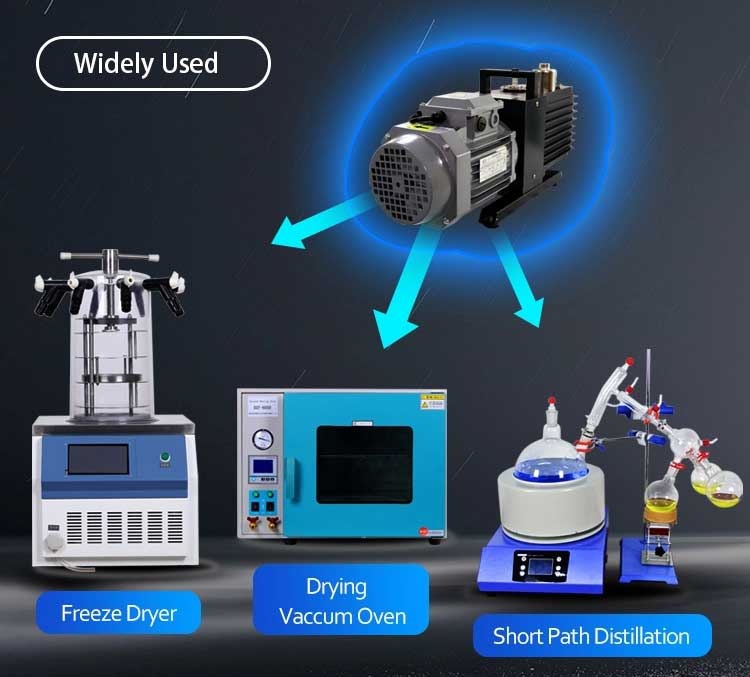
Below I will introduce the rotary vane vacuum pump produced by our company in detail.
Structure
Rotary vane vacuum pump can remove the dry gas in the sealed container. If a gas ballast device is attached, it can also remove a certain amount of condensable gas. But it is not suitable for pumping out high oxygen content, which is corrosive to metals. It will react chemically with pump oil and gas containing particulate dust.
Rotary vane vacuum pump is one of the most basic vacuum obtaining equipment in vacuum technology. Rotary vane pumps are mostly small and medium-sized pumps. Rotary vane vacuum pumps are available in single and double stages. The so-called double stage is the structure that connects two single-stage pumps in series. It is usually made into two stages to obtain higher vacuum.
The relationship between the pumping speed of the rotary vane pump and the inlet pressure is as follows: At an inlet pressure of 1333Pa.1.33Pa and 1.33 × 10-1 (Pa), its pumping speed value must not be lower than 95% of the nominal pumping speed of the pump. 50% and 20%.
Rotary vane pump is mainly composed of pump body, rotor, rotary vane, end cover and spring. A rotor is eccentrically installed in the cavity of the rotary vane pump, the outer circle of the rotor is tangent to the inner surface of the pump cavity (there is a small gap between the two), and two rotors with springs are installed in the rotor groove. During rotation, the top of the rotary blade is kept in contact with the inner wall of the pump cavity by centrifugal force and the tension of the spring, and the rotor is rotated to drive the rotary blade to slide along the inner wall of the pump cavity.
Working principle of rotary vacuum pump:
The rotary vane of the rotary vane pump divides the crescent-shaped space surrounded by the rotor, the pump cavity and the two end covers into three parts of ABC. When the rotor rotates in the direction of the arrow, the volume of the space A communicating with the suction port gradually increases The big one is in the process of inhaling. The volume of the space C, which is in communication with the exhaust port, is gradually reduced, and it is in the exhaust process. The volume of the central space B is also gradually decreasing, and it is undergoing compression. Since the volume of the space A is gradually increased (ie, expanded), the gas pressure is reduced, and the external gas pressure at the pump inlet is stronger than the pressure in the space A, so the gas is sucked in. When the space A is isolated from the air inlet, it turns to the position of the space B, the gas starts to be compressed, the volume gradually decreases, and finally communicates with the air outlet. When the compressed gas exceeds the exhaust pressure, the exhaust valve is pushed open by the compressed gas, and the gas is discharged to the atmosphere through the oil layer in the oil tank. The continuous operation of the pump achieves the purpose of continuous pumping. If the exhaust gas is transferred to another stage (low vacuum stage) through the air passage, it is pumped away by the low vacuum stage, and then compressed to the low vacuum stage and discharged to the atmosphere, forming a two-stage pump. At this time, the total compression ratio is borne by two stages, thereby increasing the ultimate vacuum.


Troubleshooting methods
Rotary vane vacuum pumps in operation often fail if they are not operated properly, such as when the vacuum of the rotary vane vacuum pump drops and fuel is injected. smoke. Oil leakage and noise at the oil seal, and emulsification of the vacuum pump oil in the pump. In case this happens, don't panic first, and eliminate them one by one after the pause. Here are several ways to troubleshoot.
· Rotary vane vacuum pump emits smoke and fuel: Refers to the rotary vane vacuum pump emitting smoke or oil.
1. Smoke, if the pump has just started to smoke, it is normal, if it overlaps with smoke, it is abnormal. Solution: Smoke indicates outside the air inlet of the pump, including pipes. valve. The container may be repaired. After leak detection is dealt with, smoking will end. Vortex flowmeter
2. Fuel injection, indicating that there are a lot of leaks outside the air intake, even the atmosphere exposed by the air intake. Solution: Seal the air inlet of the pump to make the pump run, if there is no fuel injection, there is a leak; the exhaust valve disc is damaged, check whether the exhaust valve disc is damaged, and replace the defective exhaust valve disc.
Rotary vane vacuum pump noise: This refers to the noise of the pump.
1. Knocking the cylinder, the pump makes an irregular sound when it is running, like the sound of metal knocking on metal. This is the sound made by the rotary blade when it hits the pump body. In this case, the spring between the paired rotors is disconnected or contracted or the solution: Turn on the pump to check whether the rotor springs are damaged. Replace the good spring.
2. Exhaust valve disc noise, mainly due to the exhaust valve disc of the pump is broken. The solution: Replace the exhaust valve disc.
· Vacuum degree of rotary vane vacuum pump decreased: It means that the vacuum degree of rotary vane vacuum pump measured at the moment is lower than the factory index or the vacuum degree in previous use. There are many reasons for the low vacuum. Here are some main situations.
1. The grade of this rotary vane vacuum pump oil is different from the original one. Different vacuum pump oil grades have different results due to different saturated steam pressures in different grades of oil. Replace the correct new vacuum pump oil according to the product model specifications.
2. In addition, the vacuum degree caused by the vacuum pump oil is low, that is, the emulsified discoloration of the vacuum pump oil, or the dirty. Solution: Put all the vacuum pump oil in the pump clean, replace the same type of vacuum pump oil, and solve the problem that the water vapor and impurities in the extracted gas do not enter the pump.
3. The temperature of the extracted gas may be too high. The solution: reduce the temperature of the extracted gas, or you can add a corresponding heat exchanger.
4. The oil circuit in the pump is not open or smooth, and a certain amount of oil is not maintained in the pump cavity. Solution: Check whether the oil circuit is unblocked, and add the same type of vacuum pump oil.
5. The clearance of the cooperation is increased. This is because the long-term smoked gas contains dust and the like, which causes the gap between the rotor and the stator to expand after wear. Solution: Check whether the gap is too large and replace with new parts.
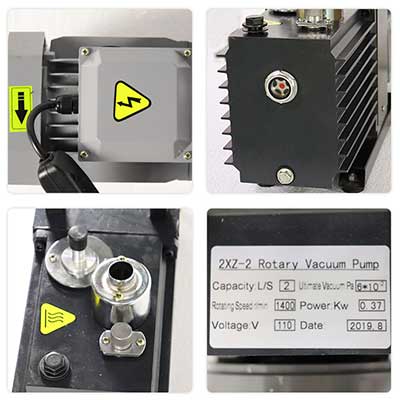

Features of 2XZ rotary vane vacuum pump
2XZ rotary vane vacuum pump has small volume and light weight. Low noise. Easy to start and so on. As a result, there are measures to prevent oil return (2XZ-8) and measures to prevent the oil seal from leaking oil to contaminate the site.
1.2XZ rotary vane vacuum pump is the basic equipment for obtaining vacuum. It can be used alone or as a foreline pump and pre-pump for various high vacuum systems.
The inlet of 2.2XZ rotary vane vacuum pump is continuously open for atmospheric operation, and it should not exceed three minutes.
3. The pump is not suitable for pumping gas that is corrosive to metals and chemically reacts with pump oil. Gases containing particulate dust are explosive gases that contain too much oxygen.
4. The pump may be used as a compression pump or a delivery pump.
Working environment of 5.2XZ rotary vane vacuum pump: in the temperature range of 5 ℃ -40 ℃, the relative temperature is not more than 90%, and the inlet pressure is less than 1333Pa to allow long-term continuous operation.
6. When connecting the power supply, connect the wires as specified on the motor label. Pay attention to the direction of rotation of the motor is the same as the direction of the arrow on the support.
7. The diameter of the pipeline to be continuously pumped should not be less than the diameter of the air inlet of the pump, and the pipeline should be short and the number of elbows should be small. Pay attention to the leakage of the pipeline.
8. Focus on checking the oil level before each start. It is advisable to fill the oil to a height of 4/5 of the diameter of the oil gauge glass when the pump is stopped.
9. The pump oil is clean SY1634-70 No. 1 vacuum pump oil.
10.2XZ rotary vane vacuum pump can be started at one time under the atmosphere or any vacuum degree. If the XZ-1 single-stage pump is difficult to start, you can remove the intake pipe plug cap to start and put it into operation.
Scope of application
1. Gas type: clean and dry air without other mixtures at room temperature. No air containing other dust and moisture is allowed.
2. Working requirements: continuous working time when the inlet pressure is greater than 6500Pa, it must not exceed 3 minutes to avoid pump damage caused by fuel injection.
3. Working requirements: The inlet pressure is allowed to work continuously for a long time under the condition of less than 1330pa.
4. Ambient temperature: The vacuum pump is generally used in an environment with a room temperature not lower than 5 ° C and a relative humidity not exceeding 90%.
The above is a detailed introduction of the rotary vane vacuum pump produced by our company.


